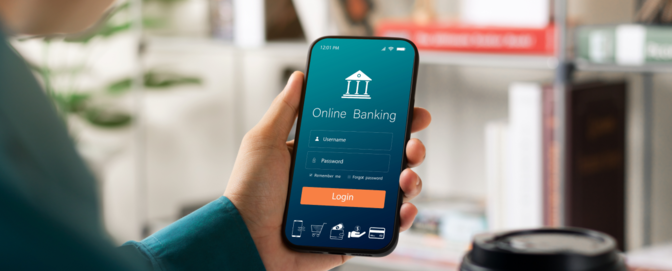
Usability testing vs. A/B testing

Usability and A/B testing create more customer-centric experiences and increase conversion rates. Although there are misconceptions about which option delivers the best results, they both complement each other. When combined, they play a valuable role in measuring your customer experience.
Although there are drawbacks and benefits to using both, they help uncover human insight to enrich your design. We’ll dive deeper into usability and A/B testing. Let's start with usability testing.
Usability testing
What is usability testing?
Usability testing is observing how users interact with—and how they respond to—your product. These days, usability testing can include remote, unmoderated tests that are set up beforehand and taken by your ideal user. There are a variety of usability testing tools that can help you get results.
From preference testing to discovering where users get stuck and confused, usability testing quickly highlights areas for improvement both before and after a product launch.
Why is it valuable?
Usability testing ensures your designing a product that matches your users' needs and wants.
Designers can identify hidden issues within designs. For example, your user attempts to complete a task, but a broken link or button interferes with the functionality of your application and prevents them from doing so. When you're aware of the design issues, you can use user feedback to improve upon any pitfalls with the usability of your design.
Your organization will uncover insights about your users, like their behavior, needs, and pain points, which will go far in creating an ideal end product for your users.
What are the limitations?
Usability testing can be expensive and time-consuming. For starters, to obtain the highest quality insights, your team has to find test participants that resemble and match your target customer, and this process may take a while.
There's a chance that test participants may behave differently during usability testing because they're not in their natural environment. Due to this, test results may not paint the whole picture.
Explore some usability testing examples to see how the process works in the real world.
A/B testing
What is A/B testing?
A/B testing, sometimes known as split testing, is a randomized process of presenting users with two different versions of a website—an A version or a B version to observe which one performs better.
Key metrics are then measured to see if variation ‘A’ or ‘B’ is statistically better at increasing business KPIs. Determining and implementing the winning variation can lead to uplifts in conversions and help with continuous improvement in customer experience.
Why is it valuable?
A/B testing alleviates speculation about which version of your software aligns with your audience. Depending on the number of conversion rates, you know which changes to your design are helping boost sales and conversions. For example, if you change your CTA, and one CTA has more conversions than the other one, you know that the former CTA is more effective. And, when you go further and enhance your a/b testing with qualitative data, you better understand your target customer and how to resonate with them.
What are the limitations?
Due to the quantitative nature of A/B testing, designers receive few qualitative insights to explain the reasoning behind users' choices. All you know is that one design change resulted in more conversions than the other, but you cannot determine whether further improvements can yield the same or better results unless you conduct more testing, which includes more time.
It takes time for designers to identify what aspects of their website to test, and designers may end up constantly testing. Let's say you tested two CTA options, but you also want to know if changing the colors of the CTA will increase sales. To receive further results, you have to test more which could be time-consuming.
Where to come up with A/B test ideas
The best way to come up with A/B test ideas is to listen to your customers and prospects. As designers, researchers, or marketers, we easily become biased from sitting so close to our product daily—and we forget to take off rose-colored glasses. Get a new lens by consulting first-time visitors or prospects. Here are some mediums you can use:
- Web analytics: Ask yourself or your team, where is your product losing revenue? Where are the drop-off points? To get started, you can find this by combing through funnel performance, high-traffic pages, low-converting pages, and user flows.
- Mouse tracking analysis: Mouse tracking lets you record what people on your site do with their mouse, and this gives you insights into where visitors are paying (or not paying) attention. Find this information by leveraging platforms that offer click maps, attention maps, or scroll maps.
- Form analytics: Imagine if you knew exactly which form field people hesitate to fill out, which field they left blank even though it was required, and which area caused the most error messages. That's exactly what some tools and platforms can tell you, giving you performance data for every single form field.
- On-page surveys: Using on-page survey tools are a great way to find out why people aren’t converting. Not everyone will fill it out, but you'll get some interesting data here that will inform the kinds of tests you should be running. For example, through an optional form, ask visitors, “If you’re not going to [sign up/ subscribe] today, can you tell us why not?"
- Chat transcripts: These records are a treasure chest of ideas where you can directly see customers’ complaints and pain points.
- User testing: Conduct usability testing with a human insight platform. For example, you may send multiple users through your organization’s funnel, to your competitor’s site, and finally to a leading organization’s site or app in your industry. You'll learn what others are doing right and where you need improvement.
When to use usability testing or A/B testing?
It's important to decide when to do usability testing and when A/B testing would be more effective. Both methods satisfy different goals, and it's best to use both interchangeably. Usability testing explains users' behaviors and why they decide to do an action, whereas A/B testing explains users' preferences and what feature performs the best on your site.
Usability testing provides qualitative data, and A/B testing explains the quantitative data. For optimal results, use both options. When you seek to better understand your user, use usability testing. When you want to know how to optimize your site for better conversions, use A/B testing.
The intersection of quantitative and qualitative data methodologies is where human insights come to life. Both methods can be helpful but combined, they allow you to see things you may have missed.

Watch a demo
See how easy it is to get fast feedback on a website, prototype, design, or more in this demo.





